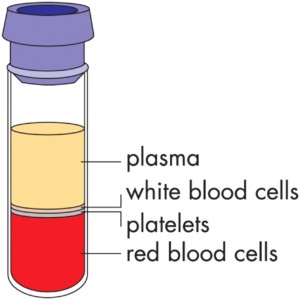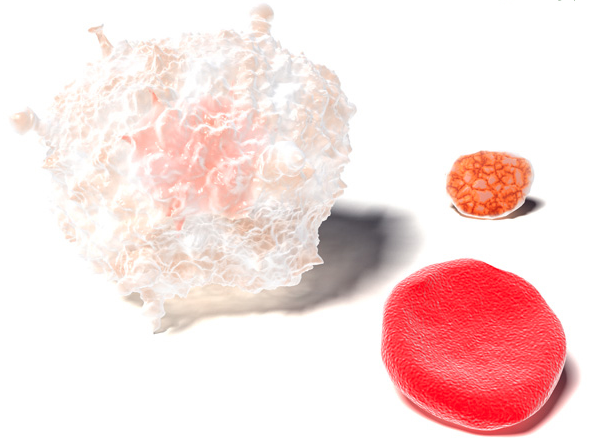The components of blood can be broken up into 2 sections – plasma and cells (AKA formed elements). Blood makes up 7% of the human body at around 5 litres in the average human being. The components of blood are: erythrocytes, leukocytes, thrombocytes, and plasma.
Erythrocytes
Erythrocytes are the first of the components of blood and account for 45% of blood volume. They are better known as red blood cells and contain hemoglobin, the molecule responsible for binding with oxygen and transporting it around the body. This is particularly important for aerobic activity, where oxygen is needed in order to sustain performance. Erythrocytes do not have a nucleus or organelles, but do contain the protein that gives you your blood type.
Leukocytes
Leukocytes are the second of the components of blood and account for less that 0.7% of blood volume. They are better known as white blood cells and are part of the bodies immune system. Leukocytes destroy and remove unwanted cells, whether that be because they are old, broken or foreign (infections such as bacteria or virus)
Thrombocytes
Thrombocytes are another component of blood and also account for less that 0.7% of blood volume. They are better known as platelets and are responsible for the clotting of blood to stop bleeding.
Plasma
Plasma is the last of the components of blood and accounts for 54.3% of blood volume. Plasma is 92% water and 8% protein – giving it a yellow colour. Plasma is responsible for the transport and delivery of nutrients such as: glucose, amino acids, fatty acids, electrolytes (dissolved minerals) and vitamins. This is particularly important for movement as the delivery of extra glucose to the muscle allows for higher intensities to be produced. Plasma is also responsible for the removal of waste products such as: carbon dioxide, lactic acid, and urea. Carbon dioxide removal is particularly important for aerobic performances, while lactic acid removal is important for anaerobic performance.

